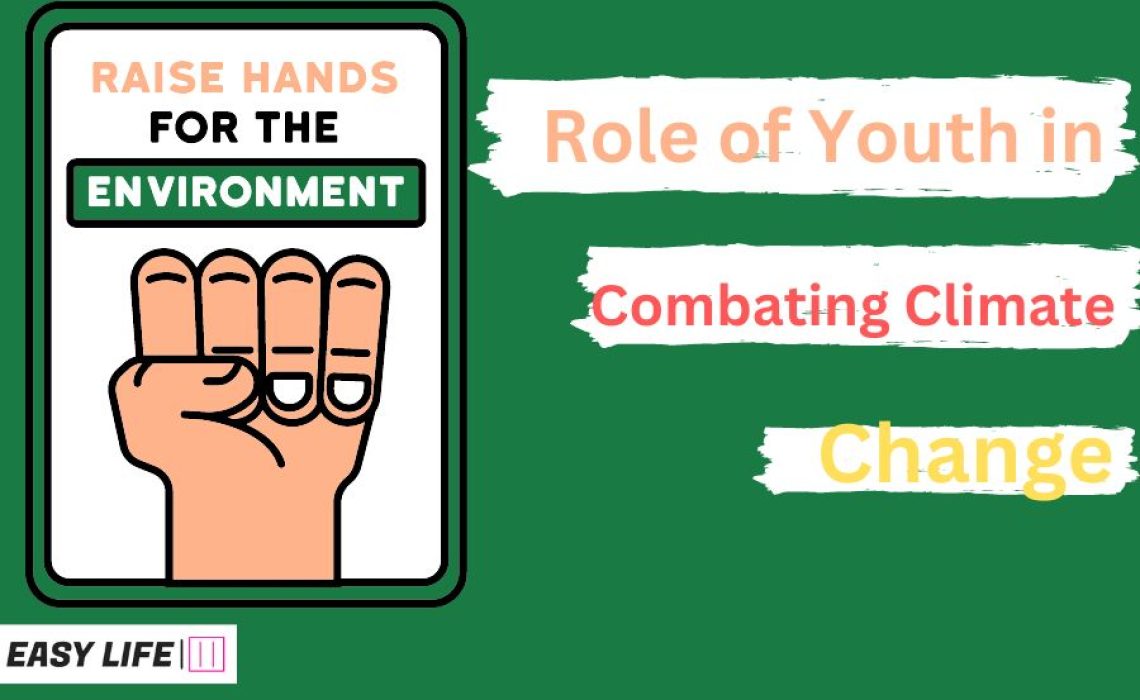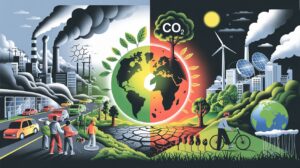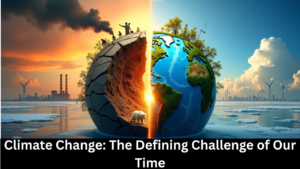Climate change, a formidable challenge facing our planet, demands immediate attention and action. Amidst this crisis, the role of youth is crucial in driving lasting change. Their passion, innovation, and unique perspectives hold the key to a sustainable future. In this blog post, we explore the various ways in which the role of youth in climate change spearheads the fight against climate change.
Table of Contents
ToggleWhat is climate change?
Climate change refers to the long-term alterations in Earth’s climate system, including shifts in temperature, precipitation patterns, and other atmospheric conditions. It is a natural process that has occurred throughout Earth’s history. However, the current rapid rate of climate change is primarily driven by human activities, specifically the increase in greenhouse gas (GHG) emissions.
Greenhouse gases, such as carbon dioxide (CO2), methane (CH4), and nitrous oxide (N2O), trap heat in the Earth’s atmosphere, creating a greenhouse effect that warms the planet. Human activities, such as burning fossil fuels (coal, oil, and natural gas) for energy, deforestation, and large-scale agriculture, release significant amounts of these gases into the atmosphere.
The consequences of climate change are far-reaching and can have severe impacts on both human society and the natural environment.
The Pivotal Role of Youth in Combating Climate Change
-
Raising Awareness and Advocacy:
Young people possess an innate ability to connect with their peers and spread messages far and wide. Harnessing this power, they can educate others about the severity of climate change, its impacts, and the urgent need for action. Moreover, through creative means like social media campaigns, art, or street performances, they can capture the public’s attention and ignite conversations.
-
Influencing Policy and Decision-Making:
Youth activists have shown time and again their potential to influence policies and demand accountability from governments and corporations. By participating in climate strikes, organizing protests, and lobbying for sustainable policies, the younger generation can be a powerful force in shaping a greener world.
-
Innovating for a Sustainable Future:
The youth’s creativity and adaptability make them natural innovators. As they engage with cutting-edge technology and research, they can develop novel solutions to mitigate climate change. From renewable energy to sustainable agriculture, their inventions and ideas can pave the way for a more resilient future.
-
Fostering a Culture of Sustainability:
By embodying sustainable lifestyles and values, young people can inspire others to follow suit. From adopting plant-based diets to reducing waste, every small step contributes to a larger shift in societal norms. As the torchbearers of change, youth can redefine what it means to live sustainably and encourage others to do the same.
- This is the main role of youth in climate change, If we stick to this rule, we can change the world and keep ourselves safe.
Read this Article: What Are the Top 5 Causes of Climate Change?
Conclusion:
The potential of youth in the fight against climate change is immense. Through advocacy, policy influence, innovation, and fostering a culture of sustainability, they can drive transformative change and ensure a healthier, greener planet for generations to come. By empowering and supporting our young people. We invest not only in their future but also in the future of our planet.
Youth and Climate Change: Frequently Asked Questions
Q1: Why is it important for youth to get involved in climate change efforts?
A1: The youth, as future leaders and decision-makers, have a vested interest in ensuring a sustainable world. Their involvement in climate change efforts brings fresh perspectives, innovative solutions, and renewed energy to the cause. Additionally, their ability to mobilize and connect with peers can amplify the message and inspire collective action.
Q2: How can young people get involved in climate change initiatives?
A2: There are numerous ways for youth to get involved in climate change initiatives, such as:
- Participating in climate strikes and protests
- Joining or forming environmental clubs and organizations
- Engaging in local community initiatives (e.g., tree planting, clean-up drives)
- Learning and sharing information on climate change
- Advocating for sustainable policies
- Practising sustainable lifestyles and encouraging others to do the same
Q3: What are some examples of youth-led climate change movements?
A3: Some notable youth-led climate change movements include:
- Fridays for Future, initiated by Greta Thunberg
- Sunrise Movement, focused on the Green New Deal
- Youth Climate Strike, advocating for urgent climate action
- Extinction Rebellion Youth, a subgroup of the larger Extinction Rebellion movement
Q4: How can educators support youth in their climate change efforts?
A4: Educators can support youth in their climate change efforts by:
- Incorporating climate change education into the curriculum
- Encouraging critical thinking and problem-solving skills
- Fostering a supportive environment for student-led initiatives
- Providing resources and guidance for climate-related projects
- Collaborating with local organizations to offer hands-on learning opportunities
Q5: Can individual actions by young people really make a difference in combating climate change?
A5: Yes, individual actions can make a difference in combating climate change. When young people adopt sustainable practices and inspire others to do the same, they contribute to a larger shift in societal norms and behaviours. Each small step, when multiplied by many individuals, can have a significant impact on reducing greenhouse gas emissions and promoting a more sustainable future.






